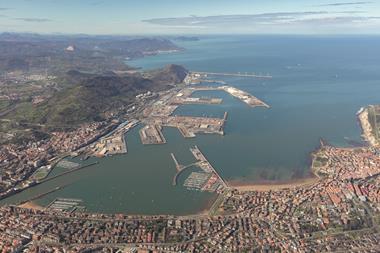It is important that early movers to green shipping are incentivised – and Green Corridors are part of that, said Katrina Ross, Policy Director at the UK Chamber of Shipping.

The focus on shipping at COP26 was very much international, with deepsea getting a lot of attention, but as the UK government worked through the details with the industry, it realised that shortsea has the largest possibility to lead the way, thanks to multiple bunkering opportunities and shorter distances, said Ross. “What may work for deepsea won’t work for shortsea, and vice versa.”
In the UK, there has been a lot of funding for R&D around Green Corridor proposals but the money available for actual projects is very small, she said. “We need to move from the R&D phase to the scaling-up phase, through collaboration and building business cases and through that you will remove all the barriers for shipping companies.”
She said the UK Chamber’s ‘key ask’ was that anyone creating a Green Corridor maintains a fuel and technology neutral approach.
The panel discussion on “Green Corridors – collaboration to drive sustainable growth” was moderated by Richard Ballantyne, chief executive of the British Ports Association.
Jesper Christensen, Operations Director at DFDS, outlined the plans for a Green Corridor linking the Dover with Calais and Dunkirk. While an electric vessel can be built in a couple of years if the plan and design is ready, one of the key difficulties, he noted, is electrification of the ports. “We need a lot of electricity to run the vessels, and especially on the UK side it is not geared up for this.”
Christensen explained DFDS’s ambition to reduce CO2 emissions by 45% by 2030, and to achieve climate neutrality by 2050. He admitted this was ‘quite a daunting challenge’ but told delegates: “There is a demand from our customers for decarbonisation because most of them also have to look at their CO2 footprint – so they will come to us and ask how are we dealing with that part of their supply chains.”
The Port of Bilbao is taking the risk and helping customers and logistics to decarbonise, said Andima Ormaetxe, Bilbao’s Director for Operations, Commercial, Logistics and Strategy. Bilbao is leading the way on a Green Corridors project for the Atlantic Corridor, aiming to attract increasing volumes between Spain and the North of Europe – not only logistics volumes but also energy volumes based on Bilbao’s Strategic Energy Hub, evolving from fossil fuels to renewable sources, including the creation and supply of green hydrogen.
“We are taking the risk, investing in these processes and inviting shipping lines and shippers to start this trip of decarbonisation,” said Ormaetxe. “So we are really putting the egg before the chicken. If we just put pressure on the rest of the community, we are not going to succeed.”
However, Nils Minor, Head of Key Account Management at P&O Ferrymasters, emphasised: “Of course green solutions also have to be competitive, otherwise shippers will likely choose something else.”
He added: “There are increasingly ship owners willing to invest but when it comes to such large investments as a vessel and significant cost increase, you have to find a balance between what is feasible and what is not.”









